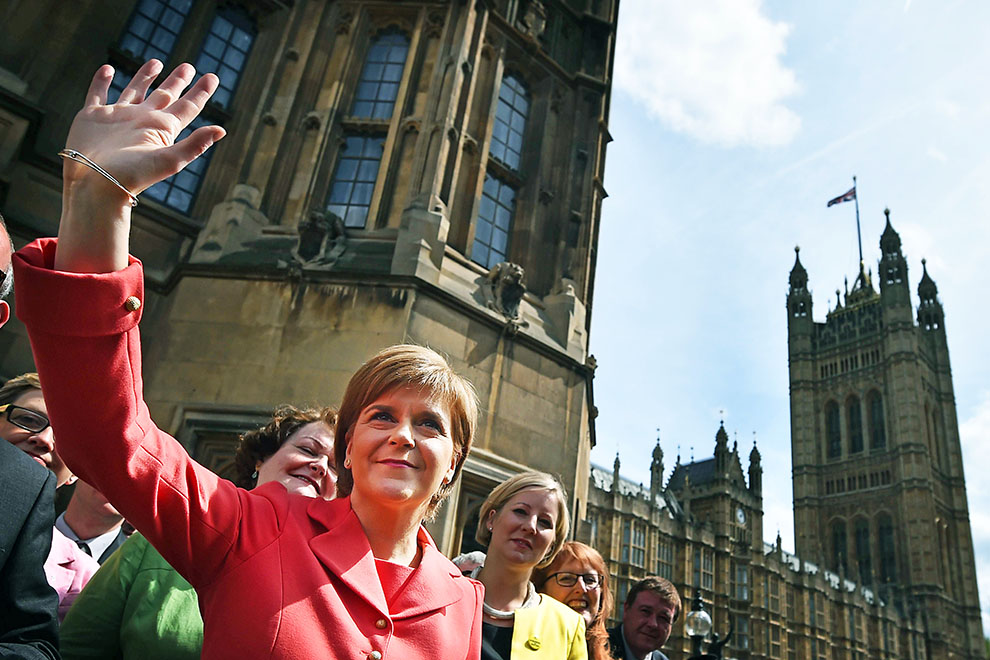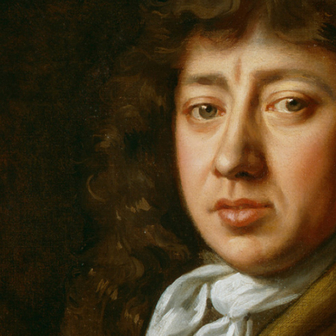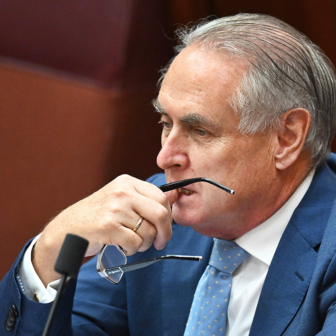Like their Australian counterparts, British general elections are usually less exciting than the media coverage suggests. Polls predict the results for weeks, if not months, in advance. Issues boil down to the economy, health, welfare and education, whatever the state of the world outside. Eventually one of two alternatives gets a majority in the lower house (Commons or Representatives) and possibly in the Senate, in Australia’s case, though not in the unelected, if reconstructed, House of Lords.
The British election on 7 May had all of this except the reliable polls, and much more besides. Three major issues kept intruding on the mundane concerns of focus groups and journalists. Should Britain leave the European Union, of which it has been an unexcited member since 1993? Should Scotland leave the United Kingdom, which was legally created in 1707 after the crowns of England and Scotland united in 1603? And are there too many immigrants?
Britain’s empire has gone, most of Ireland is independent, and Ireland, Wales and Scotland are officially bilingual; partly in reaction, racist organisations are provoking riots in urban streets and the British political and social system is looking fragile. Labour strongholds on the coalfields no longer produce coal or employ miners, and Britain is even more “two nations” than when Disraeli coined this phase 170 years ago.
The election was different, but the result was the same old one. Before last Thursday the prime minister, the mayor of London and the archbishop of Canterbury had all been educated at Eton. Today, that’s still the case. Rural England returned the Conservatives in many of the constituencies that have supported the party since 1885. In one of them, Howden, I was the Labour organising agent for the February 1974 election, which produced a unique but shortlived hung parliament. We came third, with 15 per cent of the vote. There, and in neighbouring Thirsk and Malton, three aristocratic landowning families controlled several villages. With sponsors like these, the Conservatives had an organisation in every village, which they invariably won. The results for the 2015 election show crushing Conservative majorities throughout the southeast, east, the East Midlands and southwest England. Only London had a Labour majority. England south of the River Trent, which flows through the English Midlands, is still a very conservative society.
General elections are now held in Britain every five years, on a legally determined day, always a Thursday. As in centuries past, voting is first-past-the-post and voluntary. Voters don’t express preferences, which disadvantages smaller parties like the Liberal Democrats, the United Kingdom Independence Party, the Greens and many others. For years these lesser groups included the Scottish National Party, or SNP, formed in 1934, but that party’s status in Scotland has changed dramatically. For all parties, national poll figures are less relevant than the ability to recruit support in a variety of distinct districts.
The greatest victim of first-past-the-post has been the 180-year-old Liberal Party, which ruled Britain and dominated Scotland and Wales until the early twentieth century. The Liberals were shattered by the debate over “home rule” for Ireland in the 1880s and the failures of its leadership in the first world war, and by 1950 the party was almost extinct as a parliamentary force. Its remarkable recovery from the 1960s onwards reflected public disillusion with the Conservatives. Now named the Liberal Democrats, following a merger with the Social Democrats in 1988, its collapse to only eight MPs last Thursday was the price of its coalition with its old enemy, the Conservatives. All the work of the previous half a century was undone almost at a stroke.
For parties to survive in Britain they need to create loyalties, a solid social and geographical base, a record in government, internal loyalty and cohesion, and at least a handful of identifiable leaders. The rural base of English Conservatism remains solid, despite England’s being among the most urbanised and densely populated countries in the world (along with Belgium and the Netherlands). With no revolution since 1649, England still has an identifiable upper class; it might have been taxed, reduced and infiltrated by vulgar millionaires and party nominees, but it has managed to keep a remarkable influence in rural England, especially in the south. That voting bloc has been bolstered by the arrival of urban middle-class commuters, retired military officers and others seeking a quiet life.
The Conservatives have won most elections since 1918, including this one. They have retained their political force because of the virtual disappearance of agricultural labourers, once the largest single British social class, who had been kept in their place until 1884 by not having the vote. A brief burst of unionisation and Labour voting followed, but both phenomena have largely disappeared. The only serious challenge in English rural districts came from the Liberals in Methodist Cornwall and in the southwest. In this election, though, the Conservatives wiped out their recent parliamentary allies in those areas.
The picture was different in the less numerous constituencies of Scotland, Wales and Northern Ireland. Like their Australian counterparts, Conservatives rely on the outer suburbs of the main cities – in their case, London, Birmingham, Manchester and others. But voters in those suburbs are less reliable than in the countryside. A marked revolt of the seaside resorts in 1997 saw Brighton, Torquay, Eastbourne, Great Yarmouth, Scarborough, Whitby, Hastings, Morecambe and Blackpool fall to Labour or the Liberal Democrats. (The traditional English seaside resorts had lost many millions of their residents to the joys of the Costa Brava and the Greek islands, where it is neither cold nor wet in the summer.) Not all of these seats have subsequently been won back. Brighton elected the first Green anywhere and also has a Labour town council.
If Conservatives rely on rural and suburban England, Labour has looked to industrial and mining constituencies since the 1920s, especially in South Wales, Yorkshire, Nottingham, Derby, Lancashire, the northeast and Scotland. Yet industrial cities have not always favoured Labour, and neither Birmingham nor Liverpool became strongholds before 1945. In the former textile towns of Lancashire and Yorkshire, some battles are still fought between Liberals and Conservatives just as they were a century ago. Many of these industrial towns and all of the coalfields have been losing manual labour since the depression of the 1930s. For years, not an ounce of coal has left the Rhondda, once the largest coalmining town in the world, with 100,000 men employed in the industry locally by 1914. But memories linger, revived in 1984–85 by Margaret Thatcher’s militant attack on the coal strike, which was largely based in Yorkshire. Former shipbuilding constituencies in Tyne, and Wearside, Glasgow, Liverpool and Birkenhead, sustain memories of the depressed 1930s. Thatcher also freed up the massive public housing sector for private purchase, undermining many Labour seats.
Essentially, the Conservatives are a minority in all the former coalfields, manufacturing districts and major cities. In this respect, little has changed for a century. Success comes more in modern industrial centres, mainly in southern and midland England or in the postwar new towns. They hold few seats in Newcastle, Liverpool, Manchester, Leeds, Bradford, Sheffield, Birmingham, Wolverhampton, Stoke-on-Trent, Bristol, Hull or Coventry. They don’t contest Belfast, which is left to Ulster Unionists and Sinn Féin. In Glasgow, Labour held all seven seats in 2010 before the onslaught of the SNP, which swept them all away last week. The Scottish Labour Party was the greatest victim of the 2015 election, along with the Liberal Democrats.
Then there is London, home of eight million people, perhaps 35 per cent of whom are not of British origin. As elsewhere in Britain, class and occupational divisions are the long-term basis for Labour or Conservative support. Outside the West End, the core of central London – Chelsea, South Kensington and Westminster – is solidly Labour, as is West Ham, Barking and Dagenham towards the east, and Southwark, Brixton and North Croydon to the south (an amazing change since I was born and brought up there). Right round outer London is a ring of suburbs that are predominantly Conservative or Liberal.
Unlike most large provincial cities with Labour majorities, London doesn’t belong to anyone. Its politics are more cosmopolitan. Its social tensions broke out into a massive citywide riot in 2011, which extended over twenty miles from Tottenham to Croydon. No party ever controls London as a whole. In this bad year, Labour still won more London seats than the Conservatives (forty-five to twenty-four). It is Labour at the core and Conservative in the suburbs. This duopoly was only broken by the election of seven Liberals in 1997, a total that has shrivelled away to one in the face of Conservative advances. (One Liberal won the lifelong Labour stronghold of Bermondsey in 1997 in protest against the local Labour nominee, a gay militant and worst of all, an Australian. I lived there as a student and found this hard to believe. The seat remained Liberal for eighteen years after seventy-five previous years under Labour. It was won back by Labour only at this election.)
Until election night, informed opinion was gripped by the margin of error of the fifteen major polls being published almost daily. The national polling organisations had been suggesting a tight race for over a year, with Labour marginally ahead. Towards the end, though, politicians succumbed to the usual anxiety and hysteria. The most important surprise was that a “minor party,” the SNP, began to show up in the few polls conducted in Scotland as likely to wipe out all other parties, of which Labour was the strongest. The polls, wrong on the most important question, were right about this unusual event.
Much media attention had been concentrated on the thoroughly English United Kingdom Independence Party, or UKIP, with its pound-sign banners and its vocal leader Nigel Farage. Like the big three, but unlike all other minor parties, it nominated candidates in all seats. That alone promised a million votes. It actually scored 3.5 million, making it the third-largest party, but it only secured one seat and became the prime victim of the first-past-the-post system. UKIP had no following in Scotland, Wales or Northern Ireland but seemed to have reasonable chances in English constituencies where it has been organising for years. These included ailing coastal resorts such as Ramsgate, Clacton, and Skegness, and the commuter belt between east London and Southend, often described as the home of “Essex Man,” symbol of the new Conservative working class. It had little support in major cities. UKIP built on lesser areas in Lancashire, Yorkshire, the northeast and Midlands, which had previously spawned the openly racist British National Party. This support created the belief that immigration was the issue really worrying the working classes. UKIP rapidly took this up rather than focusing on its unappealing attack on the European Union. This was a new form of British racism, opposed to East European immigrant workers rather than to Commonwealth subjects as in the past. It had an impact on eastern agricultural areas and the small towns within them.
UKIP’s boasts about their impending victories set the media and politicians off in a new direction. Labour leader Ed Miliband developed immigration policy off the top of his head. The notion that Australia had much to offer was widely used by people who had no idea what Australian policy was other than the points system adopted from 1979. “Border protection” became a popular term in a country that had officially underestimated the likely impact of East European migration by a factor of five. Miliband further accommodated English nationalism by refusing to think about a coalition with the SNP. Public opinion had always credited the Conservatives with a better record on migration. The spectre of the UKIP as a potential coalition partner for a Conservative government was also raised. Those who understood the real situation would have known that a party could run candidates in most seats (as the Communists, the National Front and the British Nationals had done in the past) and still not win a single one. That is what happened to UKIP. The system is not always bad, but it is rarely fair.
The election campaign ended, then, in a partisan atmosphere of crisis. My own limited observations in the north were that the electorate itself was quieter and less gripped than usual. Still, the official turnout of registered voters was 66 per cent, the highest for twenty years. Several millions were still unregistered and uncounted. As usual, the main abstainers were in Labour strongholds, which helps explain the higher Conservative total vote, but not their higher number of seats. UKIP put in much effort in England and the SNP swept the board. The leaders of the failed Liberal Democrat, Labour and UKIP contenders resigned after polling day, and these defeats may well cause instability in their parties. The media, including the owners of the Daily Mail and the Daily Express, had backed some of them with donations and editorials. Murdoch, in contrast, stood aside to a degree. The Sun backed the Conservatives but his Scottish Sun backed the SNP – both winners.
The elections were followed by confusion, recrimination and anxiety. Distinguished public figures seriously suggested that the Scots should be punished for being so ungrateful. This was reminiscent of what the British did with the Irish claim for Home Rule between 1880 and 1920. In that case, it took over eighty years until the bitterness was resolved when a British monarch visited the Irish republic and Ian Paisley and Martin McGuinness sat down together amicably. Both the SNP and the Welsh party, Plaid Cymru, are much more moderate than the Irish Republican Army, but both are more radical and even socialist than the Scottish Labour Party. And both are led by young and competent women.
Both Plaid Cymru and the SNP are prepared to accept the monarchy (which the Irish were not) and to remain in the European Union (which UKIP was not). They both want an amicable settlement of disputes. They were both prepared, and even eager, to support a Labour government. Unlike many Labour leaders, they remember that Keir Hardie founded the Labour Party and was a strong advocate of “home rule all round” – in other words, devolved power to the nations that make up the United Kingdom. They are not planning to “tear our family apart,” as prime minister David Cameron put it.
What were torn apart were the Scottish Labour Party, the Liberal Democrats and the hopes of over three million English voters who want to leave the European community and restrict European immigration. Controversy moved over to the incoming government’s promise to hold a referendum on this issue within two years. As the UKIP vote did not produce any significant force, though, that promise may disappear with others. •




